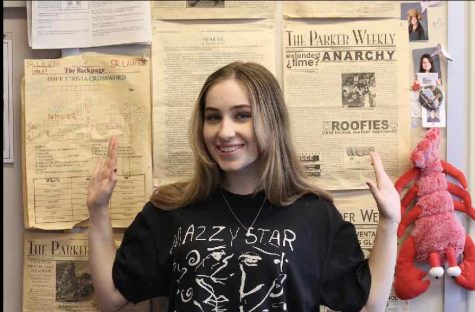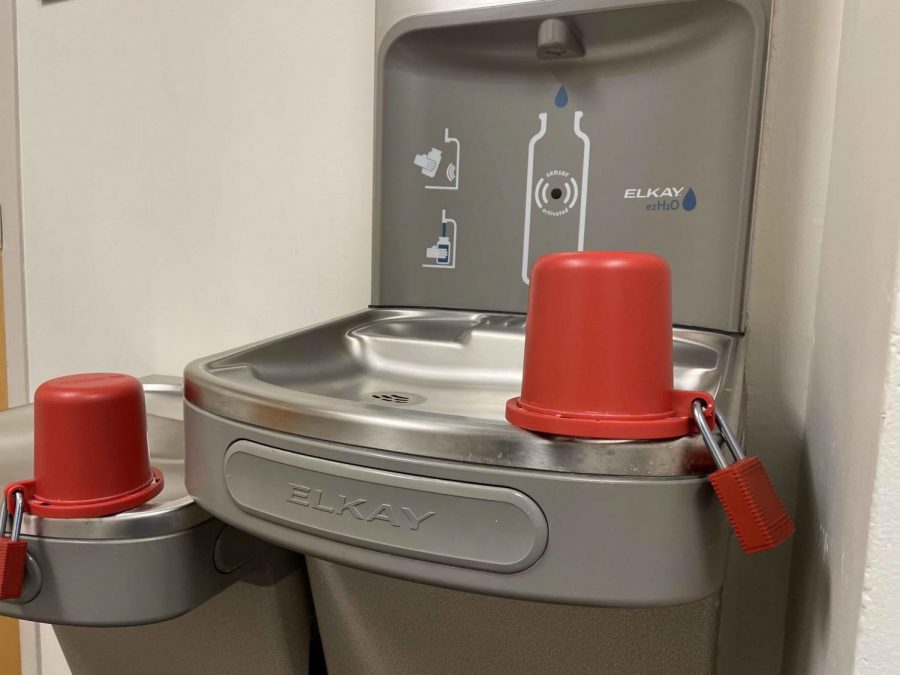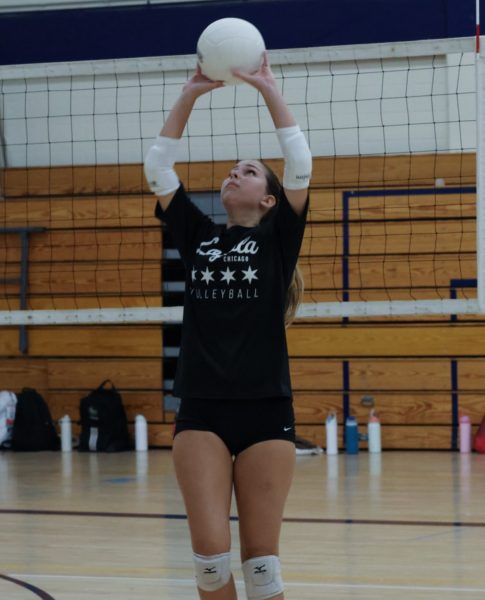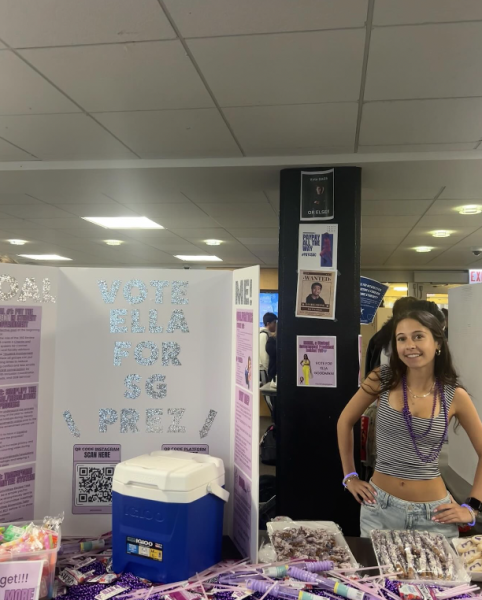Fountains of Youths
Students Want Water Fountain Spigots Reopened
Photo credit: Photo by Emma Manley
Large plastic caps and locks block access to water fountain spigots.Photo by Emma Manley.
Hydration at Parker ranges from sports-tipped Crystal Lake bottles, Nalgenes, S’wells, Camelbacks, and cloudy blue cafeteria cups, not including the infamous day where the cafeteria switched to Dasani. The most discussed addition to the water scene, however, is the red caps and locks that have kept the water fountain spigots closed for use since the school reopened.
According to Chef Zac Maness, the cafeteria sold 2,274 plastic bottles of water during October. Though most of the water bottle filling stations are open for use, many students purchase single-use bottles from the cafeteria insead of bringing their own since the spigots were closed.
Seniors Lorenzo Collier, Owen Dudney, Mia Wichman and junior Nate Manilow all endorsed the water fountains reopening during the Upperclassmen Town Hall. President Eli Moog brought the concern to Upper School Head Christopher Arnold and Dean of Student Life Joe Bruno via email, and it was subsequently brought to the Medical Advisory Subcommittee on November 11 by Principal Dan Frank.
Dr. Ricardo Rosenkranz said that during their weekly meeting, the subcommittee green-lit use of the water bottle filling stations, though the majority of these were open throughout the school already. Spigot use was not approved.
“The issue has always been that little kids tend to put their mouth right on it, and to be very honest, a lot of adults put their mouth right on it,” Rosenkranz said. “We aren’t ready from a COVID-19 perspective, to let people’s mouths be so in touch with each other.”
Though the Centers for Disease Control and Prevention has said the coronavirus does not spread through water or surfaces, there is no formal advisory on water fountains in schools.
Director of Facilities Rick Dusing said via email that he and his team installed bottle filling stations on all of the school’s drinking fountains so water bottles can be filled even though mouth spigots remain locked.
Peer institutions in Chicago have different levels of water fountain access. According to “The Latin Forum,” water fountain spigots at Latin have been open for student use during the 2021-22 school year. Many students there, however, prefer the water filling stations.
“I often find myself appreciating the accessibility and caliber that Latin’s extensive array of water fountains provides,” Latin senior Ronan Hussar said via “The Forum.” “They offer an assurance of hydration that is truly unmatched by other schools.”
The “U-High Midway” confirmed that the Laboratory School has its spigots open as well. Walter Payton senior Lucy Gold said that they only have access to bottle filling stations, a norm she assumes is the same at other Chicago Public Schools.
Rosenkranz said he had not heard or read of any coronavirus cases contracted via water fountain, but that the subcommittee’s choice partially reflected a larger cultural change. “Ultimately, it’ll happen, but I do think that our society has changed a lot in terms of germs in general,” Rosenkranz said. “Everyone’s just a little more germaphobic.”
Junior Lydia Blasko, whose mom Anne Blasko teaches art in the Lower School, said that any teacher in the division could confirm potential sanitary hazards of reopening. “At the end of the day, kids do put their mouths on it,” Blasko said. “The sanitary aspect is the only thing I have against opening them back up, but other than that, like I honestly don’t mind, I bring my own.”
Though students understand the sanitary benefits, many have noticed the environmental impact of the shift and the Environmental Committee is currently campaigning for students to move away from single-use bottles and to-go containers.
“It’s wasting plastic, the amount of water bottles given out every single day, especially if we don’t have recycling,” junior Gabriella Watkins said.
Executive Chef Zac Maness agreed. “There has to be a culture shift away from disposables to more sustainable lifestyles,” Maness said via email.
“Sometimes I forget my water bottle, so on those days I have no other option than to go and pay probably too much for water,” senior Evan Ehrhart said.
The plastic water bottles in the cafeteria cost $1.75, but reusable cups are also available by the bottle filling station.
Bruno said that though he understands why students are upset, there are alternatives available such as the water filler in the Upper School office that is open to students
“This is one area that we need to keep our health and safety at the forefront,” Bruno said. “Many people using the water fountain pose a threat to students, so in the meantime until the water fountains, I’m certain, eventually reopen, you can bring in your water bottle.”
Conversations about the potential re-opening of water fountains raised questions for some about the school’s approach to coronavirus policy. Moog brings his Nalgene to school almost every day and said he would likely not use the water fountains even if reopened, but he believes the locked spouts represent a bigger inconsistency in policy.
“There is a disconnect between the people who set the policy, the people who enforce the policy and the people that the policy actually affects,” Moog said.
Moog sees evidence for this in the green-lighting of bottle stations that were mostly already open. “The fact that the Medical Subcommittee doesn’t even know what the policy is isn’t surprising,” Moog said. “They’re out of touch, and can’t decide if we are in March 2019 or March 2020.”
Protocols such as the Ruvna health check-ins feel like a “virtue signal” to Moog. He believes water fountain use should be a choice of individual comfort and that science supports reopening the fountains.
“How is the school going to say yes to domestic travel, but not yes to water fountains? How are they going to say yes to kids eating in enclosed spaces being unvaccinated or vaccinated and then not have the water fountains open?” Moog said. “I would appreciate consistent guidelines.”
Rosenkranz disagrees, describing the subcommittee as “very, very guided by science.”
He also noted that the medical subcommittee has suggested the elimination of policies they find unhelpful. “We thought that the temperature checks were cumbersome, and the likelihood that we would get any data from that was low,” Rosenkranz said, “We kept the Ruvna because we feel like at the very least, it allows people to ask themselves these questions…we are not enforcers of it.”
While the health check-ins have helped him identify coronavirus symptoms incorrectly identified by Lower School parents as allergies, Rosenkranz also has the perspective of a Parker parent. “I know it’s annoying,” Rosenkranz. “I have to do it every morning too.”
Rosenkranz said that the policy discussions surrounding the water fountains, like those about masks, will begin to look different following the FDA approval of the Pfizer vaccine for kids ages five through 12.
Looking to 2021-22, Rosenkranz said that while there may be temporary quarantines for classroom outbreaks, most health and safety protocols will look like they did before the pandemic. “When next summer comes and the school resets for the following year, I can safely predict that I will be thankfully and blissfully out of a job,” Rosenkranz said.








